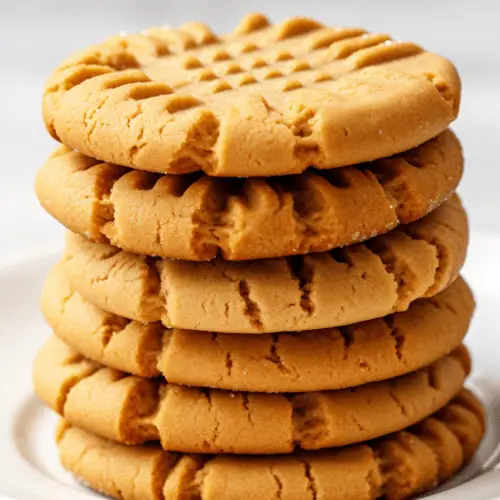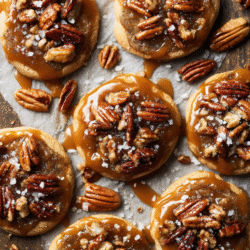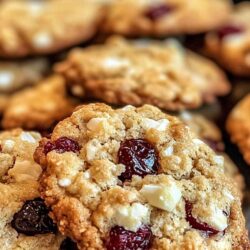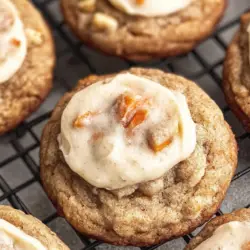WANT TO SAVE THIS RECIPE?
Peanut butter cookies have been a classic favorite for many households over the years. The distinctive criss-cross pattern and the rich taste of peanuts make them an irresistible treat. However, when it comes to the type of sugar used, there is a variety. Some recipes use brown sugar, while others opt for white sugar. But, why is this the case?

One main reason is the simplicity of ingredients. Many families have white sugar readily available in their pantries. As mentioned in this soft peanut butter cookies recipe, the aim is to make baking easy and accessible, especially when the mood to bake strikes.
Another factor is the desired texture and flavor of the cookie. Brown sugar contains molasses, which provides a moist, chewy texture and a slightly caramel flavor. On the other hand, white sugar yields a crisper cookie.
Further, some might have dietary restrictions or simply prefer not to include the molasses content present in brown sugar. Excluding brown sugar can give the cookie a pure, unadulterated peanut butter flavor.
Lastly, it’s all about personal preference. Bakers, both professional and amateur, love to experiment and find what works best for them and their families. Whether it’s a recipe passed down through generations or a new one discovered online, the choice of sugar is an integral part of the cookie’s identity.
How does using white sugar instead of brown sugar affect the texture and flavor of the cookie?
In the world of baking, the type of sugar used can significantly impact the final product’s texture and flavor. When it comes to peanut butter cookies, the choice between white and brown sugar can lead to varied outcomes.
Firstly, texture plays a crucial role in a cookie’s appeal. Brown sugar, due to its molasses content, tends to make cookies softer and chewier. If you’ve ever tried no-bake peanut butter cookies made with brown sugar, you might notice this chewy texture. Conversely, white sugar, when used in baking, generally produces a crispier and more crumbly cookie.
Flavor is another critical factor. Brown sugar imparts a rich, caramel-like undertone because of the molasses. This can complement the nuttiness of the peanut butter but may also overshadow its pure flavor in some recipes. White sugar, being neutral, allows the peanut butter’s flavor to shine through.
For those who prioritize the natural taste of peanut butter, recipes like the ones that focus on chocolate and peanut butter combinations without the interference of brown sugar might be preferable.
However, it’s essential to remember that personal preference is paramount. Some might love the rich depth brown sugar brings, while others might favor the simplicity of white sugar. The best advice? Experiment with both and find your perfect blend!
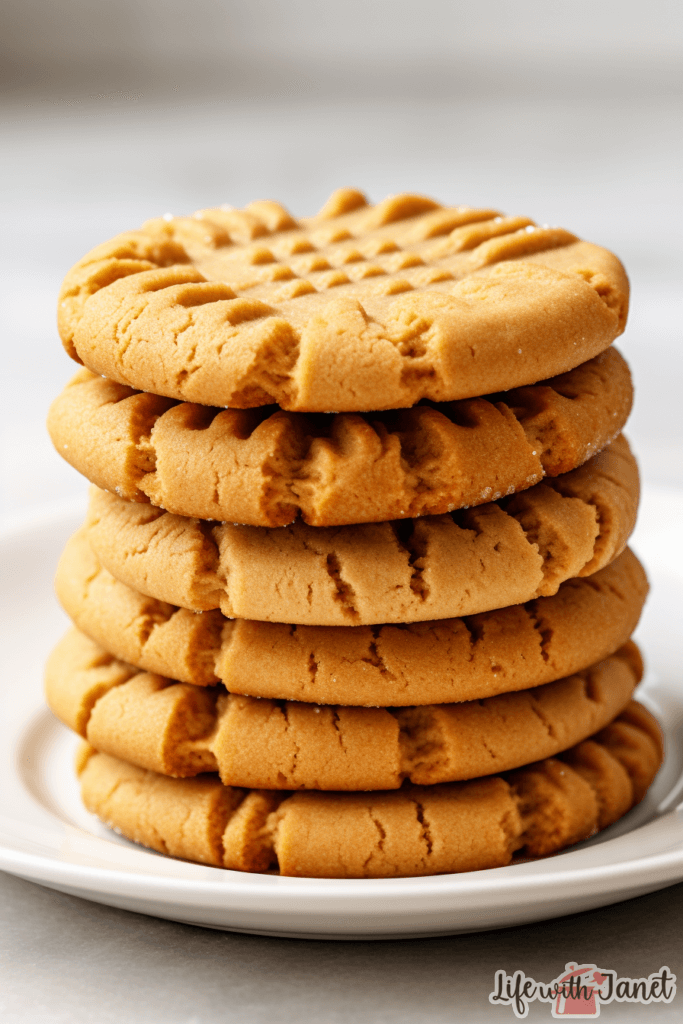
What are some alternative sweeteners that can be used in place of brown sugar in peanut butter cookies?
Diversifying sweeteners in your peanut butter cookie recipe can be both a culinary adventure and a solution for dietary needs. While traditional recipes might call for brown or white sugar, many alternatives can be used in baking to achieve different flavors and textures.
Honey: This natural sweetener offers a distinct flavor and smooth texture. However, when using honey, it’s essential to adjust the liquid content in the recipe because honey can make the dough wetter.
Maple Syrup: Like honey, maple syrup brings its own unique flavor profile. It pairs wonderfully with the nuttiness of peanut butter, lending a slight woodiness to the cookie.
Agave Nectar: A vegan favorite, agave is sweeter than sugar, so you’ll need to use less. It offers a mild flavor and can be a great alternative for those looking to avoid refined sugars.
Coconut Sugar: This low-glycemic sweetener has a similar texture to brown sugar and a slightly caramel flavor. It can be used in a 1:1 ratio as a substitute for brown sugar.
Stevia: A plant-based sweetener, stevia is calorie-free and much sweeter than sugar. Bakers need to be cautious with the quantity and might need to experiment to get the right sweetness level without a bitter aftertaste.
Date Sugar: Made from dried dates, this sweetener brings a fruity note to the cookies. It’s less sweet than regular sugar and can add a unique flavor profile to your baked goods.
By exploring these alternatives, bakers can cater to different dietary needs, experiment with flavors, or simply mix things up in the kitchen. Remember, each sweetener has its characteristics, so adjustments in the recipe might be needed.
Can I substitute brown sugar with white sugar in equal proportions when baking peanut butter cookies?
When it comes to substituting sugars in baking, it’s not always a straightforward swap. While both white and brown sugar originate from the same source, they possess distinct characteristics due to their processing methods and the presence of molasses in brown sugar.
In most cookie recipes, you can indeed substitute white sugar for brown sugar in equal proportions. However, there are a few things to consider:
- Texture: As previously mentioned, brown sugar, because of its molasses content, adds moisture to the cookie dough. This results in a softer and chewier cookie. Using white sugar will yield a crisper cookie.
- Flavor: Brown sugar provides a deeper, caramel-like flavor to cookies due to the molasses. White sugar is neutral and won’t introduce any additional flavors, allowing other ingredients, like peanut butter, to be more pronounced.
- Color: Brown sugar can give a slightly darker hue to cookies, whereas white sugar will keep them lighter in color.
- Spread: Cookies made with white sugar tend to spread more during baking than those made with brown sugar.
If you’re aiming to replicate the exact taste and texture of a recipe that calls for brown sugar, then simply using white sugar might not give the desired result. However, if you’re open to a bit of experimentation and variation in the end product, substituting in equal proportions can work.
Always remember, baking is as much an art as it is a science. Making adjustments and trying different approaches is part of the fun and discovery process!

Are there health benefits to baking peanut butter cookies without brown sugar?
The health aspect of ingredients is often a concern for many, especially when it comes to sweet treats. Given the increasing interest in healthier baking alternatives, it’s worth exploring the potential benefits of excluding brown sugar from peanut butter cookies.
1. Reduced Calories and Carbohydrates: Brown sugar and white sugar have comparable calorie and carbohydrate contents. However, if you’re replacing brown sugar with natural sweeteners like stevia or erythritol, you might be reducing the calorie count and carbohydrates in the cookies.
2. Glycemic Index: Some alternative sweeteners, like coconut sugar or agave nectar, have a lower glycemic index than brown sugar. This means they cause a slower rise in blood sugar levels, which can be beneficial for people watching their blood sugar.
3. Nutrient Content: While neither white nor brown sugar offers significant nutritional benefits, some alternatives might. For instance, honey and maple syrup contain trace minerals.
4. Avoiding Preservatives and Additives: Opting for organic or natural sweeteners can help you steer clear of any additional chemicals or processing agents commonly found in commercial brown sugars.
5. Digestion: Some people might find that refined sugars, including brown sugar, can cause digestive issues. Using natural sweeteners or alternatives might alleviate these concerns.
However, it’s essential to remember that cookies, by nature, are indulgent treats. While making them healthier is always a plus, moderation is key. Pair your cookie consumption with a balanced diet and active lifestyle.
For those interested in experimenting, this no-bake peanut butter cookie recipe might offer a delightful starting point, combining taste and potential health benefits.
Delicious Brown Sugar-Free Peanut Butter Cookies
Ingredients
- 1 cup of sugar + 1/4 cup extra for cookie sprinkle
- 1/4 cup unsalted butter room temperature
- 1 egg room temperature
- 1 cup smooth natural peanut butter
- 1 teaspoon vanilla extract
- 1/2 teaspoon salt
- 1/2 teaspoon baking soda
- 1 1/2 cups sifted flour
Instructions
- Preparation: Set your oven to preheat at 375°F. Lay a parchment sheet over your cookie tray.
- Dry Mixture: In a medium-sized bowl, sift the flour and combine with baking soda and a pinch of salt. (Wondering about the salt? Read here.)
- Wet Mixture: Take a larger bowl and, using a hand mixer, blend the butter and sugar until you achieve a creamy consistency. Incorporate the egg, followed by peanut butter and vanilla.
- Combine: Slowly introduce the dry mixture to the wet blend until it forms a moderately firm cookie dough.
- Shape & Design: Use a small scoop to place dough mounds onto the parchment, ensuring they’re spaced out. Create the classic cross-hatch design on each with a fork, then sprinkle a dash of sugar on top.
- Bake & Savor: Place in the oven for 12-15 minutes, until a golden hue emerges. Ah, the irresistible aroma of freshly baked cookies!

